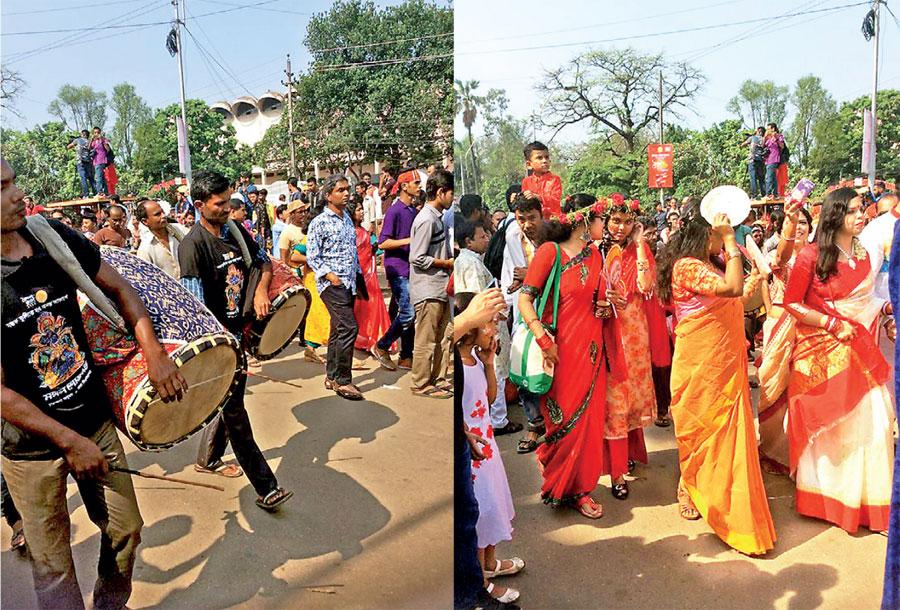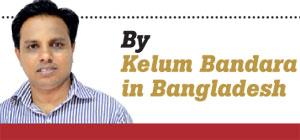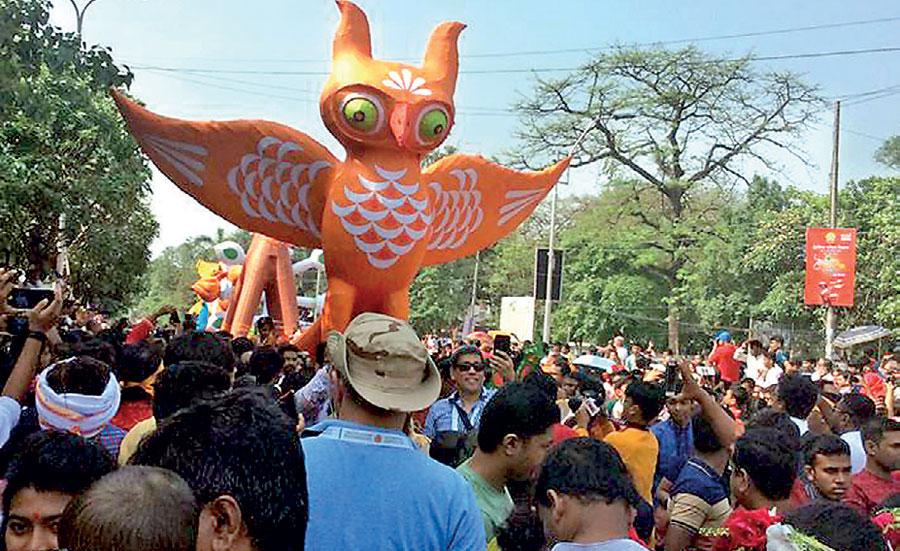Reply To:
Name - Reply Comment

People, young and old, are elegantly dressed in traditional attire and walk along the otherwise congested streets of the Bangladeshi capital Dhaka. They are heading to Ramna park in  procession. And, they greet each other saying ‘Shuva Nobo Borsho’ which pronounced in the Bangla language, sounds quite similar to ‘Suba Nawa Wasarak ‘ in the Sinhala language. It heralds the dawn of New Year on April 14 in Bangladesh. It is not only the pronunciation of the Bengali New Year greeting that sounds similar to ours but also the cultural meaning to some extent.
procession. And, they greet each other saying ‘Shuva Nobo Borsho’ which pronounced in the Bangla language, sounds quite similar to ‘Suba Nawa Wasarak ‘ in the Sinhala language. It heralds the dawn of New Year on April 14 in Bangladesh. It is not only the pronunciation of the Bengali New Year greeting that sounds similar to ours but also the cultural meaning to some extent.
The exact period of the origin of the Sinhala and Hindu new year celebration cannot be traced. It is a festival that has evolved over time immemorial assuming different cultural aspects and complexion. Let alone, it is nothing but the completion of circular movement of the sun.
Leading Sinhala scholar Prof. J.B. Dissanayake, in his booklet on the Sinhala new year refers to ancient calendars. He discusses how the Buddhist and Sinhala calendars are based on the waxing and waning of the moon. Likewise, he refers to a calendar which has its origin in India and is based on the movement of the sun through the 12 houses of the Zodiac. It is known as Shaka calendar. The New Year of Avurudu dawns when the sun moves from the house of Aries to the house of Pisces according to this calendar, coming full in its circular movement in the Zodiac system.
"they greet each other saying ‘Shuva Nobo Borsho’ which pronounced in the Bangla language, sounds quite similar to ‘Suba Nawa Wasarak ‘ in the Sinhala language"
Dr. Nalin de Silva who did studies on the origin of Sinhala new year said it could be linked to Naga people who inhabited Sri Lanka and some Indian states such as Assam in ancient times. He said these people divided the sky into 27 Nekaths, and the New Year is the period taken by the sun to move from one Nekath to another, completing one circle of movement.
So, all in all, the Sinhala and Hindu new year is determined according to the solar movement relative to the earth. Likewise, the Bengali new year, which is also celebrated on April 14, is based on the solar calendar. But, the circumstances that led to the determination of April 14 as the date for celebration in either case are different. According to Bangladeshi academics, King Shashanka of Gaur introduced a solar calendar and it marked the advent of Bengali New Year. In Sri Lanka, the dawn of New Year is attached with the celebration of harvesting. Likewise, in Bangladesh, it was to celebrate the Aman harvest.
"common is the notion of bidding farewell to the passing year and starting the incoming year on a clean slate on the new year day"
During the time of Mughals, the lunar calendar had been introduced in place of the solar calendar. According to Dhaka University’s Professor of Journalism Sania Rahman, King Akbar the Mughal reformed this calendar. He reconciled the solar and lunar calendars making way for acceptance of April 14 as the beginning of the New Year. She said that it had been done for effective tax collection by the Mughal ruler after harvesting. In this process, the king replaced the month ‘Agrahayan ‘ with the month Baishak as the first month of Bengali calendar. Pohela Baishak or the first day of the Bengali new year corresponds with April 14 according to the Gregorian calendar introduced during the British period there.
The day of Sinhala and Hindu new year, however, falls under different circumstances. However, the spirit of the festival remains similar to a great extent. In Bangladesh , the festivities are cultural in nature, and as such it is celebrated by all the communities-Muslims, Hindus and Buddhists . However, in Sri Lanka, the festival has some religious strings attached to it, and is celebrated only by the Sinhala Buddhists and the Tamil Hindus.
"The New Year of Avurudu dawns when the sun moves from the house of Aries to the house of Pisces according to this calendar,"
Regardless of such differences, common is the notion of bidding farewell to the passing year and starting the incoming year on a clean slate on the new year day. Though the Nekath system or auspicious times to resume various activities for the new year are not observed at all in Bangladeshi households, there is the tradition of cessation of business activities as far as their accounts were concerned to start afresh for the new year. In business activities, ledger books are closed and accounts opened afresh in view of the the dawn of the year. This sounds quite similar to Sri Lankans ceasing activities during Nonagathaya or the transitional period to venture into the new year at the auspicious time astrologically determined.
In Bengali culture, the Nekath system of the auspicious times are absent as far as the new year celebrations are concerned.
Another striking similarity is the new year greetings in both the cultures. Everyone wishes for peace and prosperity. Like in Sri Lankan culture, the exchange of sweetmeats, prepared for the celebration, takes place among the friends and loved ones on the day of celebration here in Bangladesh. To be clad in new cloths is another common feature.
As the sun started rising on April 14, people poured out in colourful procession, to Amna park in Dhaka - that is to greet the New Year with the singing of songs and reciting of poetry associated with Bengali culture.
Business leaders, diplomats and government officials also participated in events of New Year celebrations as usual.
What is visible in New Year celebrations of Sri Lanka, Bangladesh, and some states of India such as Assam, West Bengal and Orissa is the affinity people have towards bounty of nature and agriculture. South Asian countries have stepped up culture diplomacy to cash in on such common ties among their people to further relations, albeit challenges.
